News
Tokenism, Coding, Baiting, and a Few Other Things LGBTQ Horror Fans are Over, Part 1
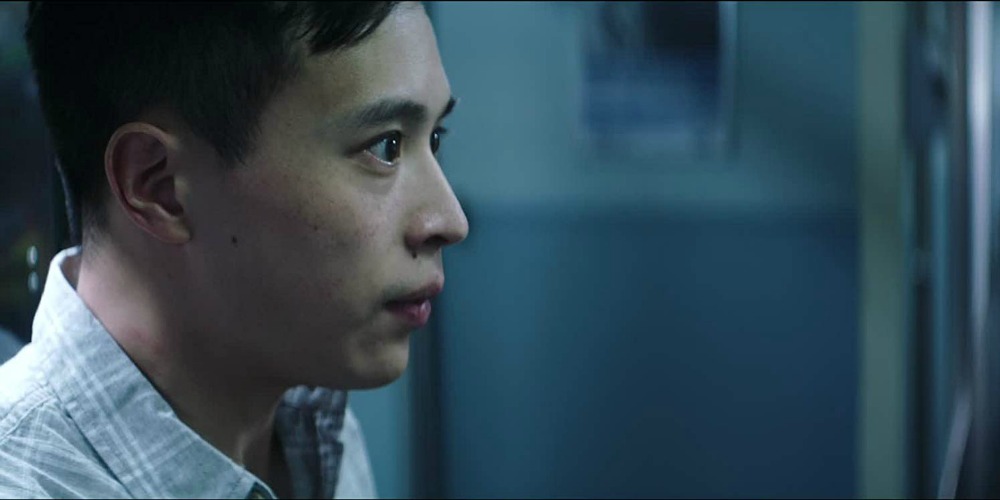
It’s 2019! All is well and right with the world and representation and diversity is the rule and things like tokenism don’t happen anymore!
Wait…that’s not right.
Oh yeah, it’s 2019 and queer-coding, queer-baiting, tokenism, and a whole host of negative stereotypes surrounding the queer community are still the order of the day.
Oh sure, we’ve seen a handful of decent examples in recent years, but by and large, those have come from independent films with no major backing and no wide release, many of which slip into obscurity–not for lack of trying on those filmmakers parts, mind you. I know a lot of those men and women out there busting their tails to get their films to a larger audience and I respect and applaud them for it.
At the same time, a large percentage of the queer people I know love horror films. It’s their preferred genre. So why is it that we can’t get a decent queer portrayal in the genre we love?
Right now some of our straight readers are wondering what the hell some of those terms I mentioned mean, and I promise we’re getting to that. First, though I would like for you, specifically, to imagine something for me.
Ready?
Imagine there’s a genre of movies you love. Let’s say, horror. You like the scares. You like the tension. Heck, you even like the villains!
Now imagine never seeing yourself, and by yourself I mean someone who looks and loves like you, on the screen in those movies. You never see a guy kiss a girl unless it’s a stunt. You never see a straight man or woman portrayed as a real person.
You are never the hero.
On occasion, there’s a character with traits that kind of, maybe, make you think they might be straight. You watch the way they walk, their mannerisms, the way that they express themselves, and your heart races because “oh-my-god, I think they’re really straight but the filmmaker just didn’t come out and say it.”
Most of the time, that character is the villain.
Take it further and imagine that you’ve been hearing about this horror movie where–gasp!–there’s an actual straight character in the film! You rush out to the theater; you’re invested in this movie and even more in the character. They are, finally, revealed to be straight! Then they die 2.5 seconds later, or worse they become a stereotype of who straight people are.
If you can imagine, fully, that world I’m describing, then you’re beginning to understand why countless queer genre fans get frustrated with the movies and the people making them.
Now, lets get started with the first of those terms I mentioned before.
Tokenism
Tokenism is defined in the dictionary as “the practice of making only a perfunctory or symbolic effort to do a particular thing, especially by recruiting a small number of people from underrepresented groups in order to give the appearance of sexual or racial equality.”
This practice, especially in the U.S. grew out of a response to desegregation laws wherein an employer would hire one black employee for a basic, low-wage job in order to give the appearance that they were acting in accordance with the law.
This one happens a lot not only with queer characters but also with a multitude of racial minorities on the screen in the genre.
It’s easy to spot a token character. You look for, generally, the one out and proud queer character on screen who is obviously going through the process of coming out and having some kind of feelings about it. You might, but probably don’t, give them long enough to be an established part of the group. Then you kill them.
Sometimes, the writers of these films will even go so far as to try to trick you into believing that what you’re seeing isn’t a token character–they’re getting better at this.
Let’s take, for example, 2018’s Truth or Dare. The film centers on a group of college students who find themselves on the bad side of the world’s most cursed game of truth or dare.
One of those students is a young man by the name of Brad Chang, and he just happens to be gay. That’s right! Not only is he gay, but he’s also Asian! I’m checking off boxes already!
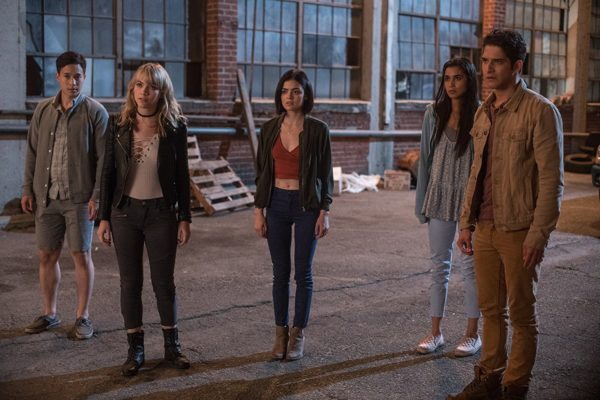
Things start off pretty great, actually. Brad’s out; his friends are supportive. He’s just one of the gang. In fact, the only person who doesn’t know about Brad is his police officer dad.
Now, this whole game is all about exposing your deepest, darkest secrets, so naturally, before this is all over, Brad finds himself having to out himself to his dad, which he does off screen. I watched with relief as Brad comes back and tells his friends that his dad took the news well.
They almost had me.
Brad gets a new dare: Take your father’s sidearm and force him to beg for his life.
Naturally, we had to take what is honestly one of the hardest things we do as queer people and heighten it, and the writers felt like we needed to dig into that wound all over again.
There’s no way that father and son had time to emotionally process what Brad coming out meant to them. We know this because as Brad holds his father at gunpoint, his father tells him, “I’m sorry for how hard I’ve been on you. I guess you think I deserve this.”
What else was he going to think when his son who just came out to him pulls a gun on him? Before anything can be resolved, Brad is shot down by another officer.
I hear you saying, so many people are dying in this movie. Why does this one matter?
It matters because his death was inherently tied up in his sexuality. It matters because he was the only queer character in the film, and it matters for one more reason, which is tied up in the rules of the game.
You see if you were dared you had to do the dare. If you chose truth, you had to tell the whole truth. Failing to follow through brings death. Everyone else who did this survived. Every single one. Not Brad.
Brad died while doing what he was supposed to be doing, and while you might think it’s nitpicking the film’s logic, for most of us in the queer community or any other marginalized group, there is a ringing truth here.
We can do everything that is asked of us. We can follow the rules just like those outside the community, and it still isn’t good enough to appease those that don’t want us seen at all.
In a recent interview with queer filmmaker named Sam Wineman which we posted yesterday, he told me this, “People ask all the time when it’s okay to kill queer characters in horror films. I feel like the answer is when we start letting them live.”
I know I’ve spent a lot of time on this particular film. Some of you probably stopped reading long ago, but for those who have stuck it out, this is just one recent example of tokenism. I’m sure, if you put your mind to it, you could come up with others. Go back up and read that definition from earlier.
Now think on this:
How many times have you seen the fetishized lesbian who serves no purpose beyond titillating the male demographic and adding to the body count?
How many times have you seen the over-the-top gay man who checks off every single stereotype box you can think of and dies because he doesn’t know how to fight?
How many times have you seen a queer character was was introduced into the film and died less than ten minutes later?
Now go back, put the shoe on the other foot, and imagine if everything I listed here was about you.
Part two of this three part series of articles will be coming in a couple of days. Until then, stay scary and Happy Pride!
'Civil War' Review: Is It Worth Watching?
Follow our new YouTube channel "Mysteries and Movies" here.

Lists
Thrills and Chills: Ranking ‘Radio Silence’ Films from Bloody Brilliant to Just Bloody
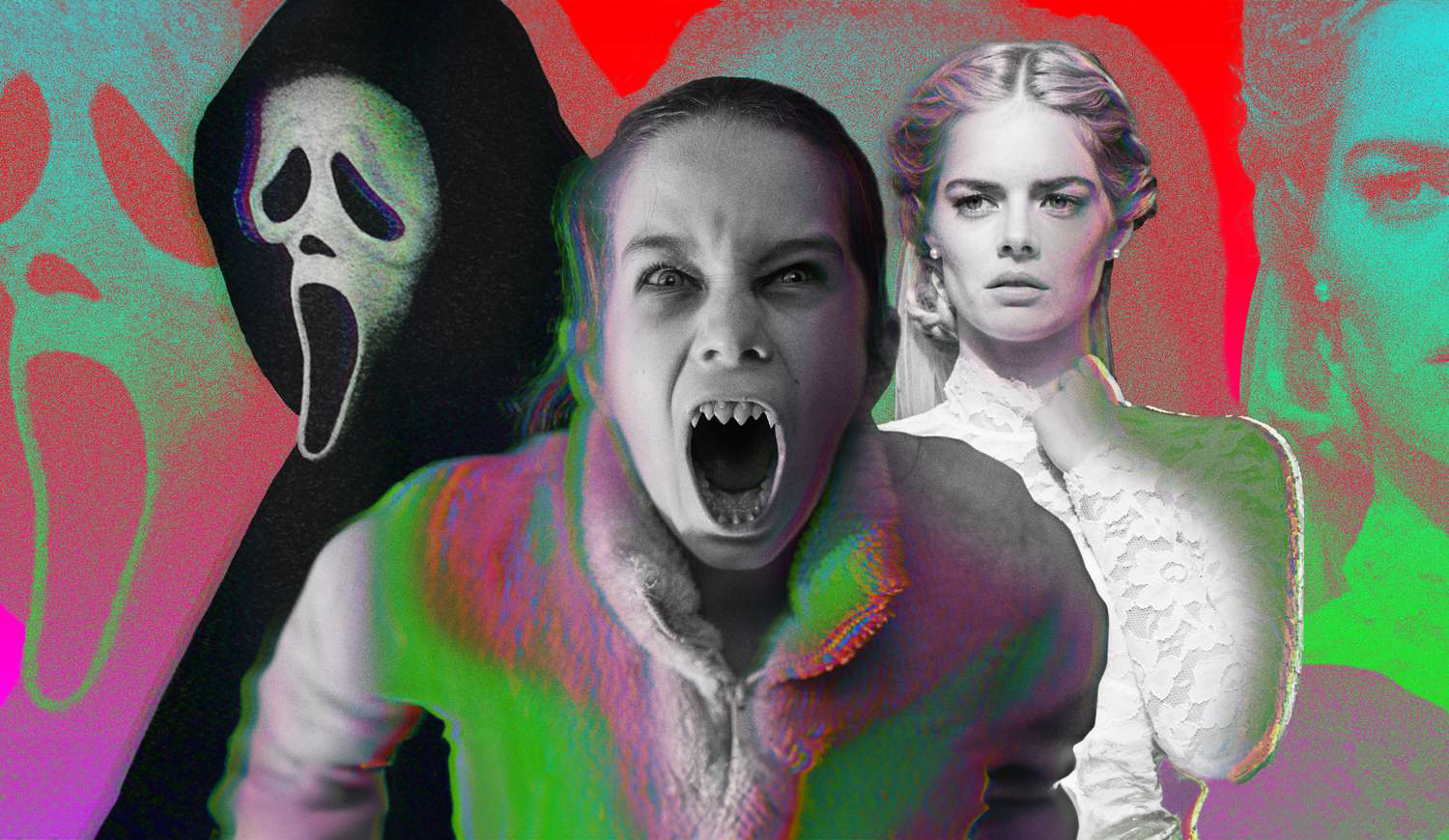
Matt Bettinelli-Olpin, Tyler Gillett, and Chad Villella are all filmmakers under the collective label called Radio Silence. Bettinelli-Olpin and Gillett are the primary directors under that moniker while Villella produces.
They have gained popularity over the past 13 years and their films have become known as having a certain Radio Silence “signature.” They are bloody, usually contain monsters, and have breakneck action sequences. Their recent film Abigail exemplifies that signature and is perhaps their best film yet. They are currently working on a reboot of John Carpenter’s Escape From New York.
We thought we would go through the list of projects they have directed and rank them from high to low. None of the movies and shorts on this list are bad, they all have their merits. These rankings from top to bottom are just ones we felt showcased their talents the best.
We didn’t include movies they produced but didn’t direct.
#1. Abigail
An update to the second film on this list, Abagail is the natural progression of Radio Silence’s love of lockdown horror. It follows in pretty much the same footsteps of Ready or Not, but manages to go one better — make it about vampires.
#2. Ready or Not
This film put Radio Silence on the map. While not as successful at the box office as some of their other films, Ready or Not proved that the team could step outside their limited anthology space and create a fun, thrilling, and bloody adventure-length film.
#3. Scream (2022)
While Scream will always be a polarizing franchise, this prequel, sequel, reboot — however you want to label it showed just how much Radio Silence knew the source material. It wasn’t lazy or cash-grabby, just a good time with legendary characters we love and new ones who grew on us.
#4 Southbound (The Way Out)
Radio Silence tosses their found footage modus operandi for this anthology film. Responsible for the bookend stories, they create a terrifying world in their segment titled The Way Out, which involves strange floating beings and some sort of time loop. It’s kind of the first time we see their work without a shaky cam. If we were to rank this entire film, it would remain at this position on the list.
#5. V/H/S (10/31/98)
The film that started it all for Radio Silence. Or should we say the segment that started it all. Even though this isn’t feature-length what they managed to do with the time they had was very good. Their chapter was titled 10/31/98, a found-footage short involving a group of friends who crash what they think is a staged exorcism only to learn not to assume things on Halloween night.
#6. Scream VI
Cranking up the action, moving to the big city and letting Ghostface use a shotgun, Scream VI turned the franchise on its head. Like their first one, this film played with canon and managed to win over a lot of fans in its direction, but alienated others for coloring too far outside the lines of Wes Craven’s beloved series. If any sequel was showing how the trope was going stale it was Scream VI, but it managed to squeeze some fresh blood out of this nearly three-decade mainstay.
#7. Devil’s Due
Fairly underrated, this, Radio Silence’s first feature-length film, is a sampler of things they took from V/H/S. It was filmed in an omnipresent found footage style, showcasing a form of possession, and features clueless men. Since this was their first bonafide major studio job it’s a wonderful touchstone to see how far they have come with their storytelling.
'Civil War' Review: Is It Worth Watching?
Follow our new YouTube channel "Mysteries and Movies" here.
News
Perhaps the Scariest, Most Disturbing Series of The Year

You may have never heard of Richard Gadd, but that will probably change after this month. His mini-series Baby Reindeer just hit Netflix and it’s a terrifying deep dive into abuse, addiction, and mental illness. What is even scarier is that it’s based on Gadd’s real-life hardships.
The crux of the story is about a man named Donny Dunn played by Gadd who wants to be a stand-up comedian, but it’s not working out so well thanks to stage fright stemming from his insecurity.
One day at his day job he meets a woman named Martha, played to unhinged perfection by Jessica Gunning, who is instantly charmed by Donny’s kindness and good looks. It doesn’t take long before she nicknames him “Baby Reindeer” and begins to relentlessly stalk him. But that is just the apex of Donny’s problems, he has his own incredibly disturbing issues.
This mini-series should come with a lot of triggers, so just be warned it is not for the faint of heart. The horrors here don’t come from blood and gore, but from physical and mental abuse that go beyond any physiological thriller you may have ever seen.
“It’s very emotionally true, obviously: I was severely stalked and severely abused,” Gadd said to People, explaining why he changed some aspects of the story. “But we wanted it to exist in the sphere of art, as well as protect the people it’s based on.”
The series has gained momentum thanks to positive word-of-mouth, and Gadd is getting used to the notoriety.
“It’s clearly struck a chord,” he told The Guardian. “I really did believe in it, but it’s taken off so quickly that I do feel a bit windswept.”
You can stream Baby Reindeer on Netflix right now.
If you or someone you know has been sexually assaulted, please contact the National Sexual Assault Hotline at 1-800-656-HOPE (4673) or go to rainn.org.
'Civil War' Review: Is It Worth Watching?
Follow our new YouTube channel "Mysteries and Movies" here.
Movies
The Original ‘Beetlejuice’ Sequel Had an Interesting Location
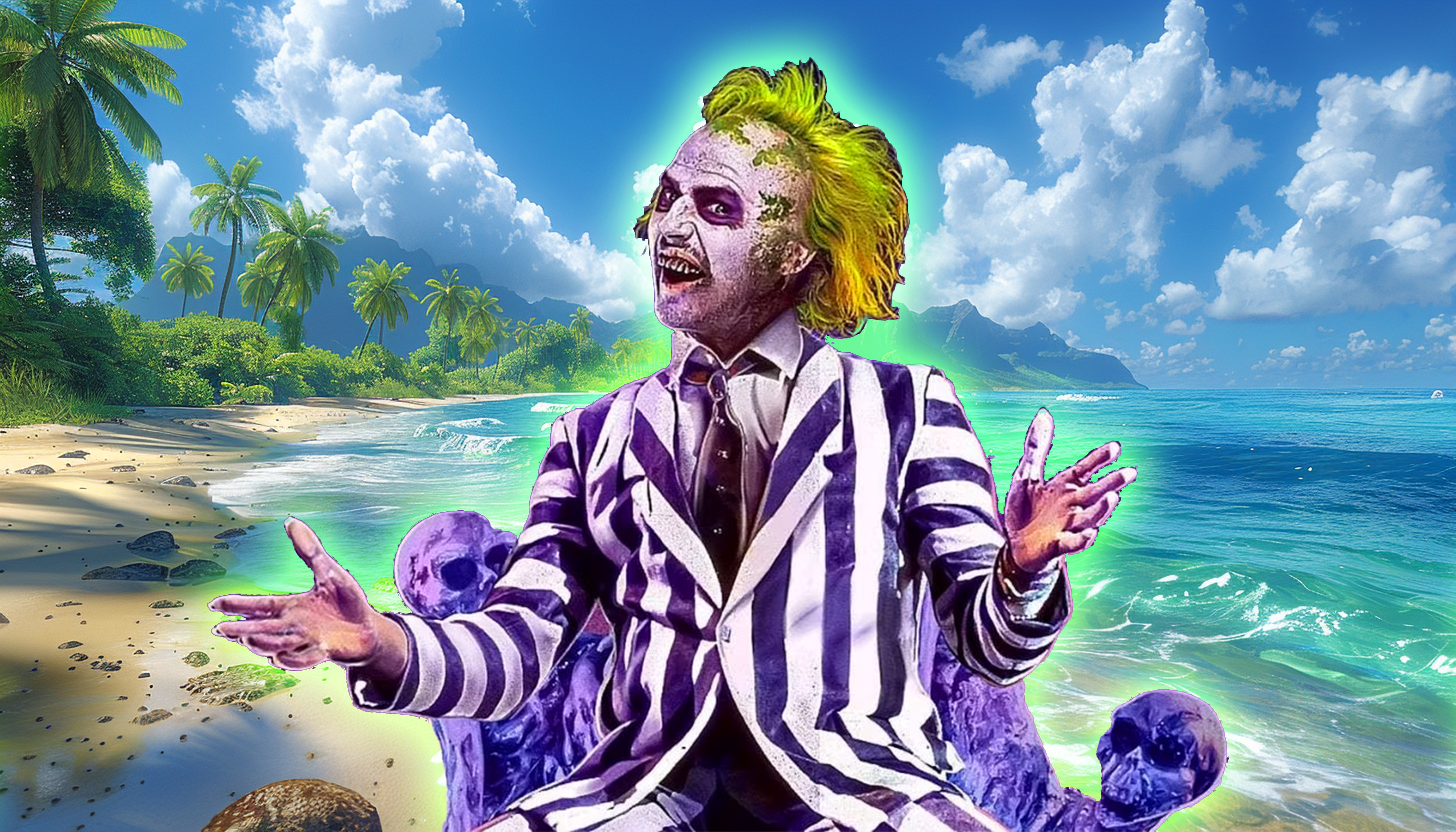
Back in the late ’80s and early ’90s sequels to hit movies weren’t as linear as they are today. It was more like “let’s re-do the situation but in a different location.” Remember Speed 2, or National Lampoon’s European Vacation? Even Aliens, as good as it is, follows a lot of the plot points of the original; people stuck on a ship, an android, a little girl in peril instead of a cat. So it makes sense that one of the most popular supernatural comedies of all time, Beetlejuice would follow the same pattern.
In 1991 Tim Burton was interested in doing a sequel to his 1988 original, it was called Beetlejuice Goes Hawaiian:
“The Deetz family moves to Hawaii to develop a resort. Construction begins, and it’s quickly discovered that the hotel will be sitting on top of an ancient burial ground. Beetlejuice comes in to save the day.”
Burton liked the script but wanted some re-writes so he asked then-hot screenwriter Daniel Waters who had just got done contributing to Heathers. He passed on the opportunity so producer David Geffen offered it to Troop Beverly Hills scribe Pamela Norris to no avail.
Eventually, Warner Bros. asked Kevin Smith to punch up Beetlejuice Goes Hawaiian, he scoffed at the idea, saying, “Didn’t we say all we needed to say in the first Beetlejuice? Must we go tropical?”
Nine years later the sequel was killed. The studio said Winona Ryder was now too old for the part and an entire re-cast needed to happen. But Burton never gave up, there were a lot of directions he wanted to take his characters, including a Disney crossover.
“We talked about lots of different things,” the director said in Entertainment Weekly. “That was early on when we were going, Beetlejuice and the Haunted Mansion, Beetlejuice Goes West, whatever. Lots of things came up.”
Fast-forward to 2011 when another script was pitched for a sequel. This time the writer of Burton’s Dark Shadows, Seth Grahame-Smith was hired and he wanted to make sure the story wasn’t a cash-grabbing remake or reboot. Four years later, in 2015, a script was approved with both Ryder and Keaton saying they would return to their respective roles. In 2017 that script was revamped and then eventually shelved in 2019.
During the time the sequel script was being tossed around in Hollywood, in 2016 an artist named Alex Murillo posted what looked like one-sheets for a Beetlejuice sequel. Although they were fabricated and had no affiliation with Warner Bros. people thought they were real.
Perhaps the virality of the artwork sparked interest in a Beetlejuice sequel once again, and finally, it was confirmed in 2022 Beetlejuice 2 had a green light from a script written by Wednesday writers Alfred Gough and Miles Millar. The star of that series Jenna Ortega signed on to the new movie with filming starting in 2023. It was also confirmed that Danny Elfman would return to do the score.
Burton and Keaton agreed that the new film titled Beetlejuice, Beetlejuice wouldn’t rely on CGI or other other forms of technology. They wanted the film to feel “handmade.” The film wrapped in November 2023.
It’s been over three decades to come up with a sequel to Beetlejuice. Hopefully, since they said aloha to Beetlejuice Goes Hawaiian there has been enough time and creativity to ensure Beetlejuice, Beetlejuice will not only honor the characters, but fans of the original.
Beetlejuice, Beetlejuice will open theatrically on September 6.
'Civil War' Review: Is It Worth Watching?
Follow our new YouTube channel "Mysteries and Movies" here.
-

 News6 days ago
News6 days agoWoman Brings Corpse Into Bank To Sign Loan Papers
-

 News7 days ago
News7 days agoHome Depot’s 12-Foot Skeleton Returns with a New Friend, Plus New Life-Size Prop from Spirit Halloween
-

 News4 days ago
News4 days agoBrad Dourif Says He’s Retiring Except For One Important Role
-

 Strange and Unusual5 days ago
Strange and Unusual5 days agoMan Arrested for Allegedly Taking a Severed Leg From Crash Site And Eating It
-

 Movies6 days ago
Movies6 days agoPart Concert, Part Horror Movie M. Night Shyamalan’s ‘Trap’ Trailer Released
-

 Movies7 days ago
Movies7 days ago‘The Strangers’ Invaded Coachella in Instagramable PR Stunt
-

 Movies5 days ago
Movies5 days agoAnother Creepy Spider Movie Hits Shudder This Month
-
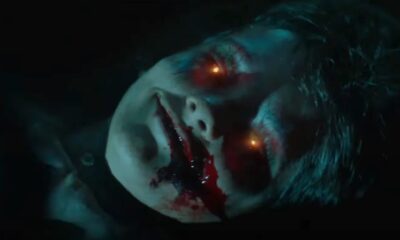
 Movies6 days ago
Movies6 days agoRenny Harlin’s Recent Horror Movie ‘Refuge’ Releasing in U.S. This Month
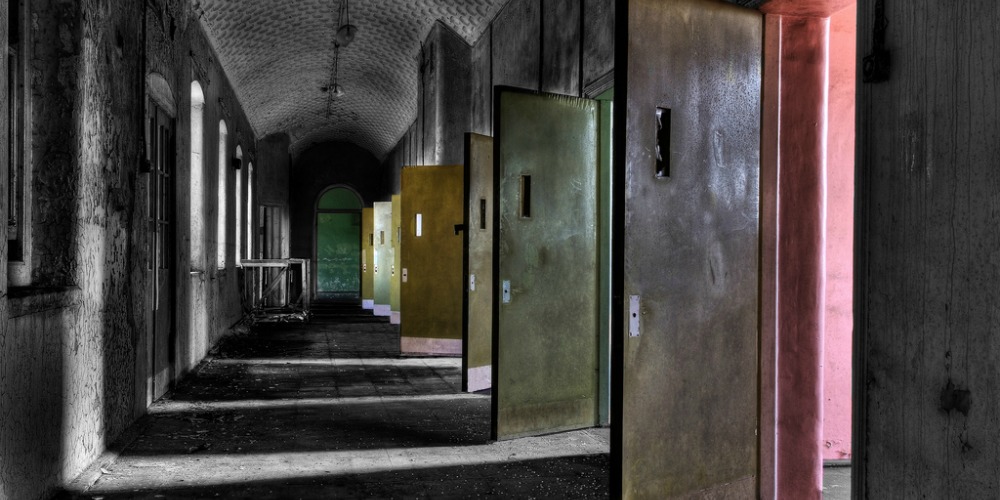


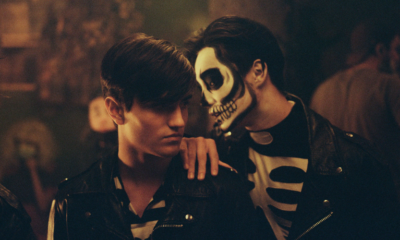



















You must be logged in to post a comment Login